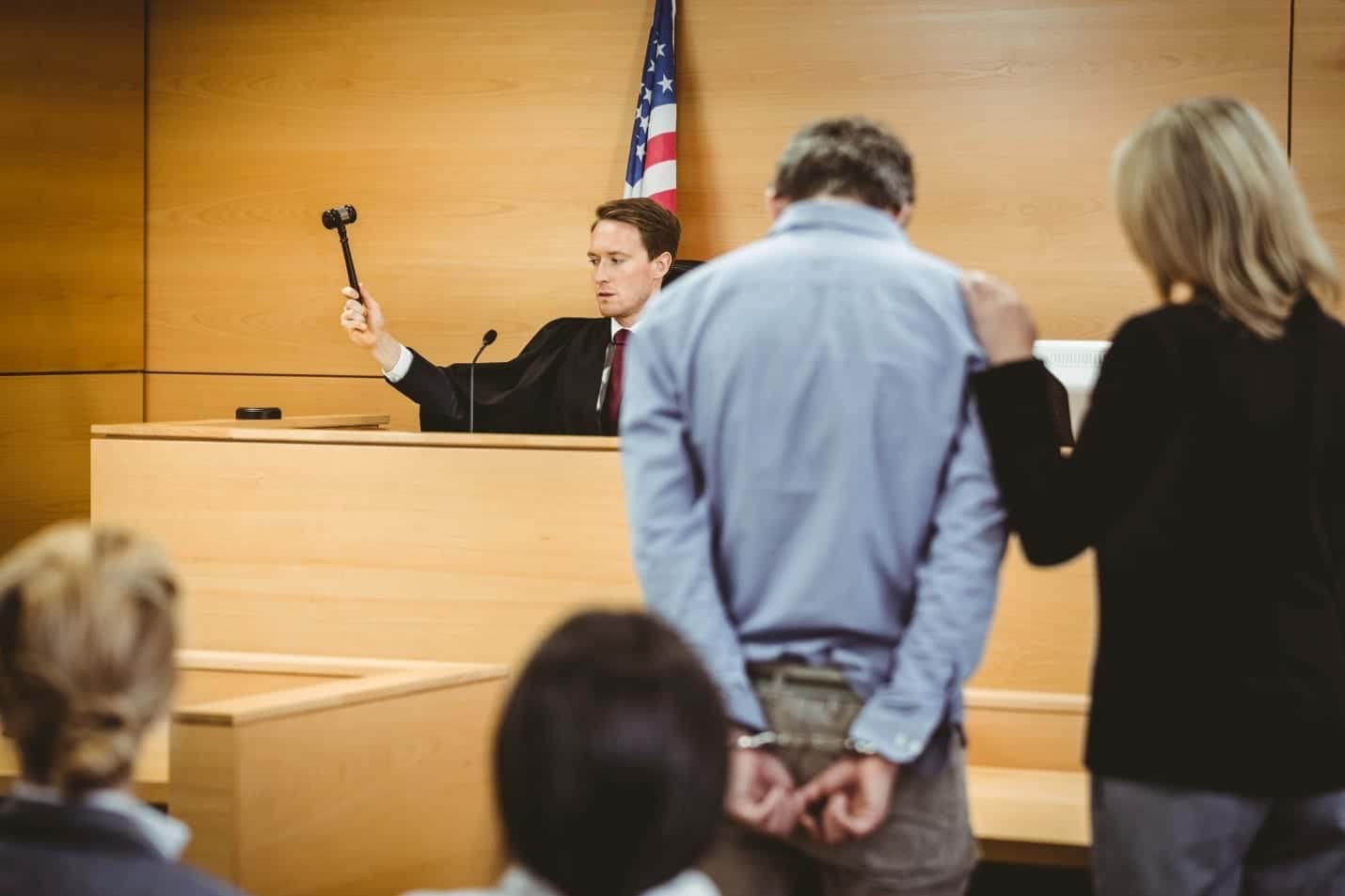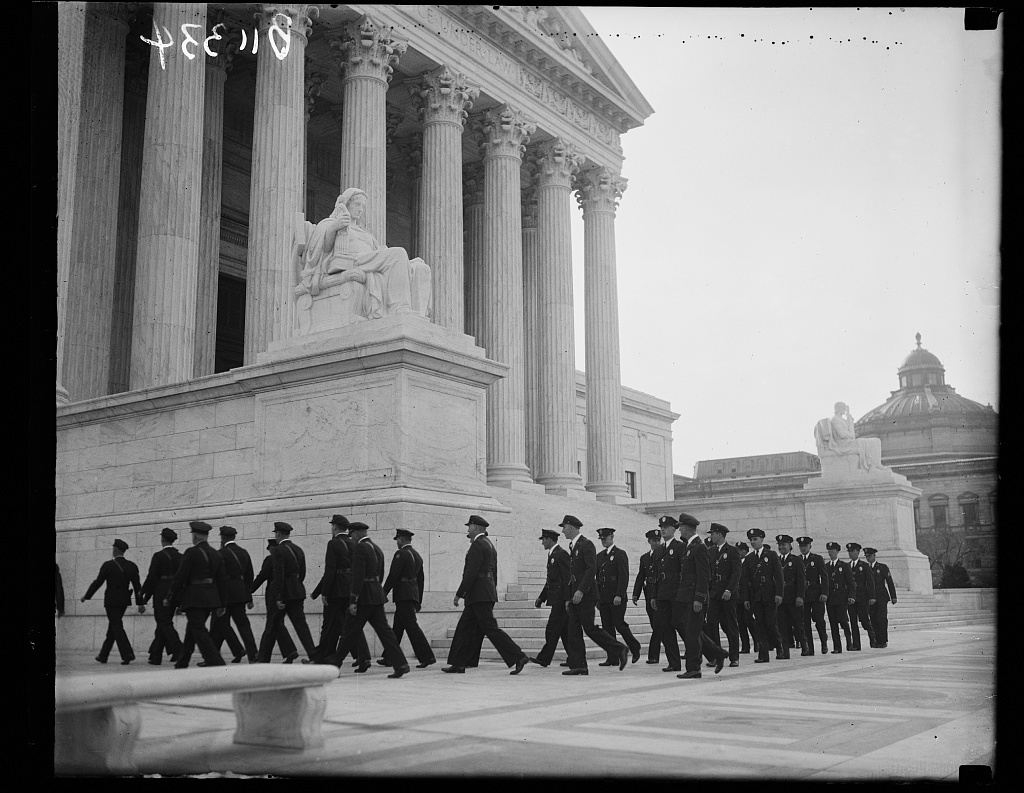The framework governing punitive measures in the judicial realm serves as a pivotal component of the justice system. It encompasses a variety of principles and protocols that aim to ensure fairness and consistency in the treatment of offenders. This intricate system reflects societal values, balancing the need for accountability with the opportunity for rehabilitation.
At its core, this framework is designed to facilitate the imposition of consequences that align with the nature of the offense. Elements such as the severity of the crime, previous behaviors, and potential for change play a critical role in determining the appropriate response. Each decision not only impacts the individual involved but also reverberates throughout the community, influencing perceptions of justice and safety.
Exploring the various components that contribute to this structure reveals a complex interplay of rules and considerations. Legal professionals, judges, and policymakers must navigate through this tapestry with careful deliberation, ensuring that each case is treated with the nuance it deserves. By delving into these mechanisms, a clearer picture of how society seeks to manage wrongdoing emerges, highlighting both the challenges and the objectives inherent in the process.
Overview of Criminal Law Sentencing
The process of determining the appropriate consequences for wrongdoing is a crucial aspect of the justice system. This framework aims to achieve a balance between punishment, rehabilitation, and societal protection. Various factors come into play when deciding the repercussions for an individual’s actions, which can vary significantly based on circumstances, jurisdiction, and the nature of the offense.
Key Factors Influencing Sentencing Decisions
Numerous elements are considered by judges when imposing penalties. These can range from the severity of the committed offense to the offender’s history. Additional aspects include the impact on victims, the intentions behind the act, and the potential for rehabilitation.
| Factor | Description |
|---|---|
| Severity of Offense | The gravity of the crime committed, whether it’s a minor infraction or a serious felony. |
| Offender’s History | Previous criminal record and any patterns of behavior that may inform the judge’s decision. |
| Victim Impact | The emotional, physical, and financial effects the crime had on the victims. |
| Intent | The purpose behind the actions taken by the offender, including any premeditation. |
| Rehabilitation Potential | Assessment of the individual’s ability to reform and their willingness to change behavior. |
Types of Penalties
The variety of repercussions that may be assigned reflects the complexity of each case. Options can include incarceration, probation, community service, fines, or a combination of these. Ultimately, the goal is to promote justice and deter future misconduct while safeguarding the rights of all parties involved.
Key Principles Behind Sentencing Decisions
Decisions regarding penalties are guided by a variety of factors that aim to ensure fairness, justice, and social order. These elements reflect the broader societal values and objectives in addressing offenses and rehabilitating individuals. Understanding the foundation of these choices is crucial for grasping how a balanced approach is maintained within the judicial system.
Proportionality serves as a cornerstone in creating a relationship between the severity of the misconduct and the corresponding punishment. This principle ensures that more serious violations are met with more significant consequences, while lesser transgressions receive lighter repercussions.
Deterrence is another essential concept, aiming to discourage not only the individual offender but also the broader community from engaging in similar misconduct. This principle operates on the belief that visible and appropriate penalties will dissuade potential wrongdoers.
Rehabilitation focuses on the offender’s personal development and reintegration into society. Sentences may incorporate educational programs, counseling, or community service, reflecting an investment in the individual’s capacity for change.
Another vital aspect is restorative justice, which seeks to repair the harm caused by the offense. This approach emphasizes the importance of reconciling relationships between victims, offenders, and the community, promoting healing and accountability.
Lastly, individualization recognizes that each case is unique, taking into account the specific circumstances surrounding the offense and the offender’s background. This principle allows for tailored remedies that address the nuances of each situation, leading to more equitable outcomes.
Factors Influencing Sentence Duration
The duration of a punishment is shaped by a multitude of elements that interact within the justice system. Each case is unique, reflecting a variety of circumstances and considerations that can sway the final outcome. Understanding these influencing factors is essential for grasping how decisions are made regarding the length of penalties imposed.
Severity of the Offense: One of the primary determinants is the seriousness of the wrongdoing. More severe offenses typically attract longer durations, reflecting society’s need for appropriate retribution and deterrence.
Prior Criminal Record: An individual’s history plays a significant role in shaping the consequences they face. Repeat offenders often receive harsher penalties compared to first-time perpetrators, as their actions demonstrate a pattern of behavior that the legal system seeks to address.
Remorse and Cooperation: Expressions of regret and willingness to assist authorities can positively influence the length of a sentence. Demonstrating accountability may lead to slight reductions in penalties.
Mitigating and Aggravating Circumstances: Factors that lessen the culpability of an offender, such as mental health issues or challenging life circumstances, may lead to shorter sentences. Conversely, aggravating circumstances, like the use of a weapon or the impact on the victims, can extend durations.
Judicial Discretion: Judges often have the leeway to impose varying durations based on their interpretation of the law, personal beliefs, and experiences. This subjectivity can result in differences in sentencing outcomes even for similar cases.
The Role of Plea Bargaining: Engaging in plea negotiations can result in reduced sentences. Offenders who accept responsibility for their actions early in the process may benefit from more lenient treatment.
Ultimately, the interplay of these factors culminates in the final decision on the duration of penalties, illustrating the complexity of the system and its aim to maintain justice and societal order.
Types of Sentencing Options Available
In the realm of jurisprudence, various alternatives exist for addressing offenses committed by individuals. These options are designed to encourage rehabilitation, ensure public safety, and deliver appropriate consequences based on the severity of the crime and the circumstances surrounding it. Each alternative serves a distinct purpose and has its own implications for the offender and society.
Common Alternatives
Different methods can be utilized to determine the response to an individual’s actions, reflecting the nature of their offense and their personal history. Here are some prevalent choices:
| Option | Description |
|---|---|
| Probation | A court-ordered period during which an individual remains under supervision instead of serving time in prison. |
| Community Service | A directive requiring the offender to perform a specified number of hours of unpaid work for the community. |
| Imprisonment | Confinement in a correctional facility for a determined length of time, reflecting the severity of the crime. |
| Fines | Monetary penalties imposed on the offender as a recompense for their actions. |
| Rehabilitation Programs | Structured interventions aimed at addressing underlying issues such as addiction or mental health conditions. |
Alternative Approaches
In addition to traditional methods, there are innovative approaches that focus on restorative measures and collaboration between the offender, victim, and community. These practices aim to facilitate healing and repair the harm caused by the offense.
Role of Judges in Sentencing
Judges play a pivotal part in the judicial process, particularly in determining the consequences for those found guilty of offenses. Their responsibilities encompass not only the application of justice but also the assurance of fairness and equity within the framework of the legal system. The decision-making process requires a careful appraisal of various factors to deliver a well-considered outcome.
Key Responsibilities
The duties of judges in this context can be summarized as follows:
- Evaluation of Evidence: Judges assess the evidence presented during trials to understand the full context of the cases they oversee.
- Consideration of Mitigating and Aggravating Factors: They weigh different elements, such as the defendant’s background, the severity of the crime, and any potential harm caused to victims.
- Impartiality: A judge must remain neutral, ensuring that personal biases do not influence the outcome.
- Legal Interpretation: They interpret relevant statutes and regulations to apply them correctly to the situation at hand.
Influence on Outcomes
The decisions made by judges significantly impact both offenders and society as a whole. Their rulings aim to achieve the following:
- Deterrence: Sentencing should deter future criminal behavior, highlighting the repercussions of unlawful actions.
- Rehabilitation: Judges often consider options that promote reform and reintegration rather than simple punishment.
- Public Safety: The preservation of community safety is paramount, influencing the severity or leniency of consequences.
- Restoration: Efforts may be made to restore justice to victims and reconcile with the community.
Ultimately, the role of judges in this important domain is both complex and essential, shaping the parameters of legal recourse and societal norms.
Impact of Sentencing Guidelines on Justice
The framework that governs the imposition of penalties plays a crucial role in shaping the fairness and equity of the judicial system. Those frameworks are designed to ensure that people facing similar charges receive comparable consequences, ultimately aiming to foster public confidence in the administration of justice. However, the influence of such frameworks extends beyond mere consistency; it also encompasses broader societal implications and the treatment of offenders.
Equity and Fairness
One of the primary goals of these frameworks is to promote equity in the judiciary. By establishing specific criteria for consequences, the system strives to minimize biases, ensuring that decisions are not swayed by external factors such as race, socioeconomic status, or community pressure. However, the effectiveness of this aim can vary based on how well these frameworks are applied in practice. Discrepancies in interpretation by judges can lead to variations in outcomes, potentially undermining the principle of fairness.
Public Perception and Trust
The impact of structured penalty systems also resonates deeply within society. When individuals perceive that outcomes are fair and justified, their trust in the legal system is bolstered. Conversely, when penalties seem arbitrary or excessively lenient, public skepticism can grow. This can lead to a call for reform, where the perceived injustices prompt discussions around the necessity of revising existing frameworks. Ultimately, the relationship between established norms and societal expectations highlights the importance of maintaining a balance between justice and public sentiment.
Appeals and Modifications in Sentencing
When individuals find themselves facing a decision made by the judicial system, they have avenues to challenge or alter that ruling. This process not only serves to ensure fairness but also allows for potential revisions based on new evidence, procedural errors, or shifts in the legal landscape. The subsequent actions can lead to significant changes in the initial outcomes.
The appeal process typically involves several steps:
- Filing a notice of appeal within a specified timeframe.
- Submitting a written brief that outlines the grounds for the appeal.
- Participating in oral arguments, if applicable.
- Awaiting the appellate court’s decision, which can affirm, reverse, or modify the original ruling.
Modifications to a ruling may also occur after the initial verdict has been rendered. Such changes can be initiated for various reasons:
- New Evidence: Discovery of substantial evidence that could affect the outcome.
- Change in Circumstances: Significant alterations in the defendant’s situation or behavior.
- Legal Errors: Identification of mistakes made during the trial process that infringed on the rights of the defendant.
Overall, these processes play a crucial role in maintaining the integrity of the judicial system, ensuring that outcomes are just and equitable.
Q&A: Criminal law sentencing
What are sentencing guidelines in criminal law, and how do they influence sentencing decisions?
Sentencing guidelines are a set of standardized principles and rules that help judges determine appropriate sentences for criminal offenses. These guidelines consider various factors, such as the severity of the crime, the defendant’s criminal history, and any mitigating or aggravating circumstances surrounding the case. The primary purpose of sentencing guidelines is to ensure consistency and fairness in sentencing across similar cases. In practice, judges may refer to these guidelines during sentencing to ensure that the punishment aligns with established norms, while still retaining some discretion to tailor sentences based on individual circumstances.
How do judges use discretion when imposing sentences, and what factors do they consider?
Judges have a certain degree of discretion when imposing sentences, even within the framework of sentencing guidelines. Factors they often consider include the nature and circumstances of the offense, the defendant’s prior criminal history, the impact of the crime on victims, and any expressions of remorse shown by the defendant. Additionally, judges may take into account personal circumstances, such as mental health issues or substance abuse problems, which might influence the appropriate sentence. This discretion allows judges to impose a sentence that they believe serves justice and rehabilitation purposes, while still adhering to the broader principles outlined by the sentencing guidelines.
Can a defendant appeal their sentence, and what grounds are typically considered in such appeals?
Yes, a defendant can appeal their sentence if they believe it was unjust or improperly imposed. Common grounds for appeal may include claims that the sentence was excessively harsh, that the judge failed to properly consider mitigating factors, or that the sentencing process violated legal standards or the defendant’s rights. Appellate courts review the sentencing record to determine whether any legal errors occurred during the trial or sentencing phase that would warrant a change in the sentence. However, it is important to note that appeals are not simply about dissatisfaction with the sentence; they must be based on legitimate legal arguments or procedural failings.
What are the different types of sentences that can be handed down in criminal cases?
In criminal cases, there are several types of sentences that judges may impose, each serving different purposes. The most common types include: 1) Incarceration: Imprisonment in jail or prison for a specific period. 2) Probation: A period of supervised release where the offender must comply with certain conditions instead of serving time in prison. 3) Fines: Monetary penalties paid to the court as punishment. 4) Restitution: Compensation paid to victims for their losses or harm caused by the crime. 5) Community service: Court-ordered service to the community as a form of punishment. Judges often combine these sentences to serve both punitive and rehabilitative goals, aiming to deter future crime while addressing the needs of the victims and society.
What is the role of the sentencing commission in the criminal justice system?
The sentencing commission plays a crucial role in establishing and guiding sentencing policies within the criminal justice system. It develops federal sentencing guidelines that help ensure consistency and fairness in the imposition of sentences for federal criminal offenses. The commission reviews sentencing laws and practices, providing recommendations for reforms and adjustments based on trends in criminal conduct and judicial branch practices.
How do aggravating and mitigating factors influence the sentencing process in state and federal courts?
Aggravating and mitigating factors are essential considerations in the sentencing process. Aggravating factors, such as prior convictions or the seriousness of the offense, can lead to an increased sentence, while mitigating factors, like the defendant’s background or lack of prior criminal charges, may result in a decreased sentence. The court may use these factors during the sentencing hearing to determine the appropriate sentencing range, ensuring that the sentence imposed aligns with the nature of the crime and the offender’s circumstances.
What is the significance of a guilty plea in the context of criminal sentencing?
A guilty plea can significantly impact criminal sentencing as it often leads to a more lenient sentence for the defendant. When a defendant pleads guilty, it may be part of a plea agreement that outlines a recommended sentence range and may involve a reduced charge or sentence in exchange for cooperation. The judge will decide the sentence to be imposed during the sentencing hearing, considering factors such as the seriousness of the offense and the offender’s prior convictions.
How do state and federal sentencing guidelines differ in their approach to mandatory minimum sentences?
State and federal sentencing guidelines differ in their application of mandatory minimum sentences, which require a minimum sentence for specific offenses. Federal law requires adherence to strict federal sentencing guidelines that dictate minimum and maximum sentences based on the severity of the crime and any prior convictions. In contrast, state law may offer more flexibility in sentencing, allowing judges to consider individual circumstances and potentially impose lighter sentences, even when a mandatory minimum exists.
What is the process a court follows to determine the sentence to be imposed on a defendant convicted of a crime?
When a defendant is convicted of a crime, the court follows a structured process to determine the sentence to be imposed. This involves a sentencing hearing where the judge considers evidence and legal information, including the offense characteristics, prior convictions, and any aggravating or mitigating factors. The court may also rely on a presentence report prepared by a probation officer, which provides insights into the defendant’s background and the impact of the crime. Ultimately, the judge will decide the appropriate sentence within the established sentencing range based on the specific circumstances of the case.





